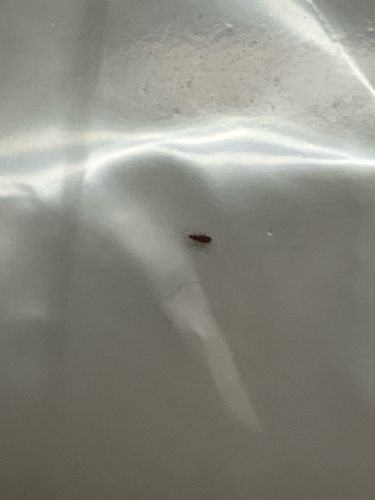Booklouse (or Psocid)
Scientific Name: Often Psocoptera species, various genera (e.g., Liposcelis)
Order & Family: Order Psocoptera, various families (e.g., Liposcelididae)
Size: 1-2 mm (often very small, almost microscopic, 0.5-10 mm depending on species)

Natural Habitat
Damp, dark, and warm places where mold or fungi can grow. Common in homes, libraries, old books, stored food products, and wall voids. They thrive in high humidity conditions (above 60-70%).
Diet & Feeding
Fungi, mold, minute organic particles, starch-based materials (e.g., book bindings, wallpaper paste, flour, cereals), dead insects.
Behavior Patterns
They are typically wingless or have small, reduced wings. They are not known to bite humans. Booklice are often found in large numbers but are individually very small. They prefer undisturbed areas and can be an indicator of high humidity and moisture problems within a building. They are often mistaken for bed bugs due to their small size and appearance, but they do not feed on blood.
Risks & Benefits
Potential risks include contamination of stored food products, damage to books, paper, and other starchy materials, and can be a nuisance in large numbers. They can also indicate moisture problems that might lead to mold growth. Generally, they are considered harmless to humans and do not transmit diseases. There are no significant benefits associated with their presence in human dwellings.
Identified on: 9/17/2025